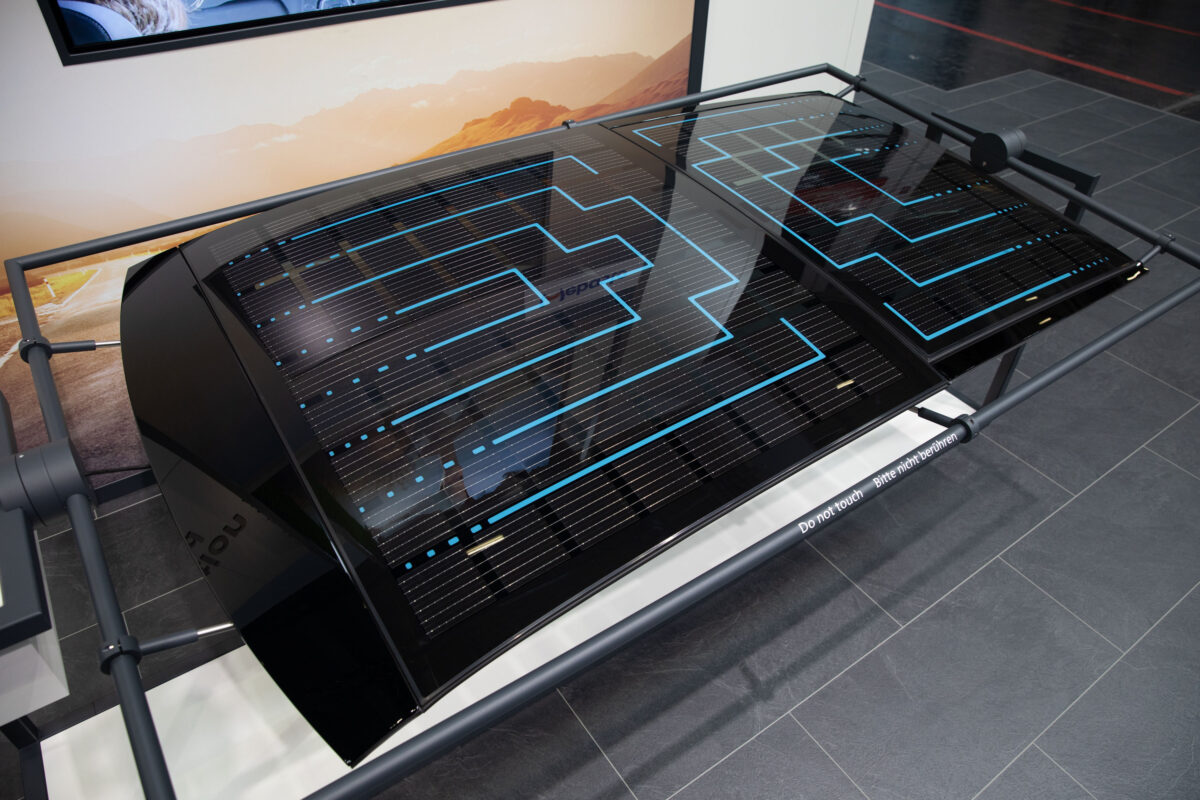Germany-based Webasto, a developer of vehicle-integrated PV (VIPV) solutions and an automotive industry supplier, has launched a solar panel system for car roofs that can slide open.
The company said it has already incorporated the module into an electric sports utility vehicle produced by an undisclosed US-based manufacturer.
“The system integrates 120 passivated emitter rear contact (PERC) cells and has a power output of 300 W,” a company spokesperson told pv magazine, adding that the US automaker calculated an additional range of up to 3,000 kilometers per year, depending on environmental conditions and the battery management system used.
The encapsulated PERC cells are laminated between two safety glass (VSG) panels in a two-part system, a front panel and a rear panel. The PV units are rigid, they neither roll nor fold. They feature a top-loading outer slider mechanism, a proprietary Webasto Stockdorf design, which raises the front panel part a few millimeters and then slides it over the rear part, according to Webasto’s spokesperson.
The front sliding panel weighs 21 kg, measures 1.2 m2, and has blue decorative detailing. The rear panel is 0.9 m2 and has the same blue decorative detail. A frame supporting the weight of the front and rear panels integrates the unit’s motor. The spokesperson added that Webasto has incorporated a tow cable design to ensure solar energy harvesting even when the panel is in the open position.
The complete sunroof assembly, including panels, tow cables, drive cable, and motor, is assembled and quality-checked at the Webasto Velky Meder facility in Slovakia, ready for integration in the factory at the stage where welded and fixed automobile frames are ready for installation of parts, such as engine, doors, and fenders.
“This solar sunroof option is an original equipment offering and is seamlessly integrated directly by the manufacturer, eliminating the need for aftermarket solutions,” the spokesperson said.
VIPV systems like this can deliver power to the high-voltage battery that drives motors or to onboard sub-systems, such as air conditioning. “The utility factor is by no means the only benefit. The appealing design of a modern solar roof from Webasto is a statement of sustainability, also demonstrating the owner’s environmental awareness,” said Jan Henning Mehlfeldt, responsible for the global roof business at Webasto.
This content is protected by copyright and may not be reused. If you want to cooperate with us and would like to reuse some of our content, please contact: editors@pv-magazine.com.



By submitting this form you agree to pv magazine using your data for the purposes of publishing your comment.
Your personal data will only be disclosed or otherwise transmitted to third parties for the purposes of spam filtering or if this is necessary for technical maintenance of the website. Any other transfer to third parties will not take place unless this is justified on the basis of applicable data protection regulations or if pv magazine is legally obliged to do so.
You may revoke this consent at any time with effect for the future, in which case your personal data will be deleted immediately. Otherwise, your data will be deleted if pv magazine has processed your request or the purpose of data storage is fulfilled.
Further information on data privacy can be found in our Data Protection Policy.